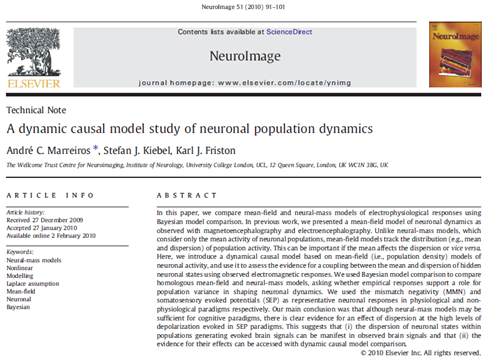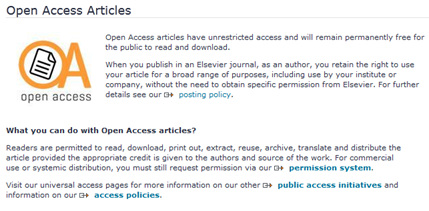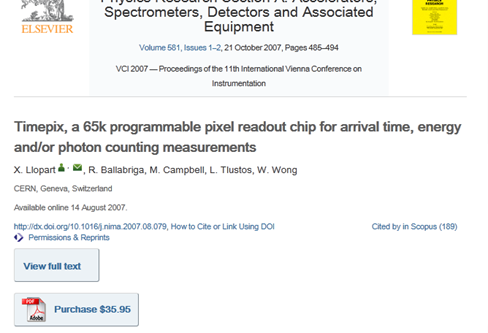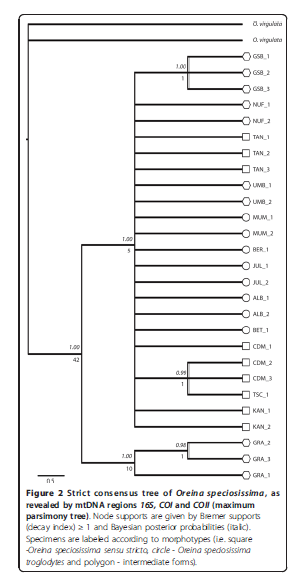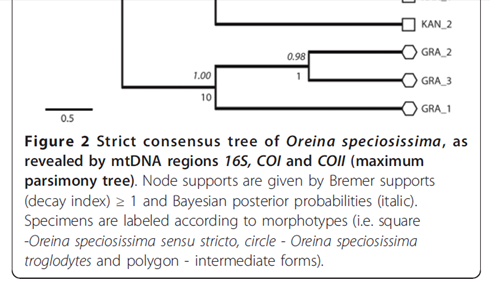Many people now feel that the CC-NC and CC-ND licences are counterproductive – I estimate that in “Open Access” alone this is costing >> 1 billion USD in forbidding re-use and general paralysing FUD. Here’s a great exposition of why we must reform CC licences NOW!
Note that in science there is additional argument and evidence (http://www.pensoft.net/journal_home_page.php?journal_id=1&page=article&SESID=&type=show&article_id=2189 ) and Prof. Mike Carroll PLoS Biology, *Why Full Open Access Matters*, at
> http://www.plosbiology.org/article/info:doi%2F10.1371%2Fjournal.pbio.1001210.
Here’s Danny’s arguments – if you haven’t time just be convinced that CC-NC doesn’t work, stops the honest people working with material intended for them , is ambiguous, etc.
|
|
|
|

|
|
to Open

|
|
via: http://freeculture.org/blog/2012/08/27/stop-the-inclusion-of-proprietary-licenses-in-creative-commons-4-0/
———- Forwarded message ———-
From: Students for Free Culture <webleader+rss-bot@freeculture.org>
Date: Mon, Aug 27, 2012 at 3:15 AM
Subject: [FC-discuss] Stop the inclusion of proprietary licenses in Creative Commons 4.0
To: discuss@freeculture.org
Over the past several years, Creative Commons has increasingly
recommended free culture licenses over non-free ones. Now that the
drafting process for version 4.0 of their license set is in full gear,
this is a “[a once-in-a-decade-or-more opportunity][1]” to deprecate the
proprietary NonCommercial and NoDerivatives clauses. This is the best
chance we have to dramatically shift the direction of Creative Commons
to be fully aligned with the [definition of free cultural works][2] by
preventing the inheritance of these proprietary clauses in CC 4.0′s
final release.
The concept of free culture has its roots in the history of free
software (popularly marketed as “open source software”), and it’s an
important philosophical underpinning to the CC license set. As with free
software, the word “free” in free culture means free as in freedom, not
as in price, but Creative Commons has not [set or adhered to any
standard or promise of rights][3] or taken [any ethical position][4] in
their support of a free culture. The definition of free cultural works
describes the necessary freedoms to ensure that media monopolies cannot
form to restrict the creative and expressive freedoms of others and
outlines [which restrictions are permissible or not][5]. Although
Creative Commons provides non-free licenses, the fact that they
recognize the definition reveals a willingness and even desire to
change.
Creative Commons started off by focusing much more on flexibility for
rightsholders, but since its early days, the organization has moved away
from that position. Several projects and licenses have been retired such
as the Sampling, Founders’ Copyright, and Developing Nations License.
It’s obvious that something like Founders’ Copyright which keeps “all
rights reserved” for 14 years (before releasing into the public domain)
is not promoting free culture. Giving rightsholders more options and
easier ways to choose what rights they want to give others actually
reinforces permission culture, creates a fragmented commons, and takes
away freedom from all cultural participants.
**What’s wrong with NC and ND?**
The two proprietary clauses remaining in the CC license set are
[NonCommercial][6] (NC) and [NoDerivatives][7] (ND), and it is time
Creative Commons stopped supporting them, too. Neither of them provide
better protection against misappropriation than free culture licenses.
The ND clause survives on the idea that rightsholders would not
otherwise be able protect their reputation or preserve the integrity of
their work, but all these [fears about allowing derivatives][8] are
either permitted by fair use anyway or already protected by free
licenses. The [NC clause is vague][9] and survives entirely on two even
more misinformed ideas. First is rightsholders’ fear of giving up their
copy monopolies on commercial use, but what would be considered
commercial use is necessarily ambiguous. Is distributing the file on a
website which profits from ads a commercial use? [Where is the line
drawn][10] between commercial and non-commercial use? In the end, it
really isn’t. It does not increase the potential profit from work and it
does not provide any better protection than than Copyleft does (using
the ShareAlike clause on its own, which is a free culture license).
The second idea is the misconception that NC is anti-property or anti-
privatization. This comes from the name NonCommercial which implies a
Good Thing (non-profit), but it’s function is counter-intuitive and
completely antithetical to free culture (it [retains a commercial
monopoly][11] on the work). That is what it comes down to. The NC clause
is actually the closest to traditional “all rights reserved” copyright
because it treats creative and intellectual expressions as private
property. Maintaining commercial monopolies on cultural works only
enables middlemen to continue enforcing outdated business models and the
restrictions they depend on. We can only evolve beyond that if we
abandon commercial monopolies, eliminating the possibility of middlemen
amassing control over vast pools of our culture.
Most importantly, though, is that both clauses do not actually
contribute to a shared commons. They oppose it. The fact that the ND
clause [prevents cultural participants from building upon works][12]
should be a clear reason to eliminate it from the Creative Commons
license set. The ND clause is already the least popular, and
discouraging remixing is obviously contrary to a free culture. The
NonCommercial clause, on the other hand, is even more problematic
because it is not so obvious in its proprietary nature. While it has
always been a popular clause, it’s use has been in slow and steady
decline.
Practically, the NC clause only functions to cause problems for
collaborative and remixed projects. It prevents them from being able to
fund themselves and locks them into a proprietary license forever. For
example, if Wikipedia were under a NC license, it would be [impossible
to sell printed or CD copies of Wikipedia][13] and reach communities
without internet access because every single editor of Wikipedia would
need to give permission for their work to be sold. The project would
need to survive off of donations (which Wikipedia has proven possible),
but this is much more difficult and completely unreasonable for almost
all projects, especially for physical copies. Retaining support for NC
and ND in CC 4.0 would give them much more weight, making it extremely
difficult to retire them later, and continue to feed the fears that
nurture a permission culture.****
**Why does this need to happen now?**
People have been vocal about this issue for a long time, and awareness
of the problematic nature of ND and NC has been spreading, especially in
the areas of [Open Educational Resources][14] (such as OpenCourseWare)
and [Open Access to research][15]. With the percentage of CC-licensed
works that permit remixing and commercial use having [doubled][16] since
Creative Commons’ first year, it’s clear that there is a growing
recognition that the non-free license clauses are not actually
necessary, or even good.
Both NC and ND are incompatible with free licenses and many, if not the
vast majority, of NC and ND licensed works will not be relicensed after
CC 4.0, so the longer it takes to phase out those clauses, the more
works will be locked into a proprietary license. There will never be a
better time than this. Creative Commons has been shifting away from non-
free licenses for several years, but if it does not abandon them
entirely it will fail as a commons and [divide our culture][17] into
disconnected parts, each with its own distinct licence, rights and
permissions granted by the copyright holders who ‘own’ the works.
In December of 2006, Creative Commons implemented a subtle difference
between the pages for free culture and non-free licenses: green and
yellow background graphics (compare [Attribution-ShareAlike][18] to
[Attribution-NonCommercial][19]). This was also when they began using
license buttons that include license property icons, so that there would
be an immediate visual cue as to the specific license being used before
clicking through to the deed. In February of 2008, they began using a
seal on free culture licenses that said “[Approved for Free Cultural
Works][20]”, which was another great step in the right direction. In
July of this year, Creative Commons released a [completely redesigned
license chooser][21] that explicitly
says whether the configuration
being used is free culture or not. This growing acknowledgement of free
vs. non-free licenses was a crucial development, since being under a
Creative Commons license is so often equated with being a free cultural
work. Now, retiring the NC and ND clauses is a critical step in Creative
Commons’ progress towards taking a pro-freedom approach.
The NC and ND clauses not only depend on, but also feed misguided
notions about their purpose and function. With that knowledge, it would
be a mistake not to retire them. Creative Commons should not depend on
and nurture rightsholders’ fears of misappropriation to entice them into
choosing non-free CC licenses. Instead of wasting effort maintaining and
explaining a wider set of conflicting licenses, Creative Commons as an
organization should focus on providing better and more consistent
support for the licenses that really make sense. We are in the perfect
position to finally create a unified and undivided commons. Creative
Commons is at a crossroads.This decisive moment will in all likelihood
bind their direction either being stuck serving the fears that validate
permission culture or creating a shared commons between all cultural
participants.
We don’t want the next generation of the free culture movement to be
saddled with the dichotomies of the past; we want our efforts to be
spent fighting the next battles.****
**What should we do? **
There have been lots of discussions on the CC-license list about
promoting free culture licenses and discouraging proprietary ones. A
couple of proposals have been made to encourage the use of free licenses
over the non-free ones.
One is a rebranding of the non-free licenses. They could be
differentiated in a much more significant way than it currently is, such
as referring to NC and ND as the “Restricted Commons” or “Limited
Commons” or some variant thereof. License buttons could also be color
coded in the same way that license pages are (green for free culture
licenses, yellow for proprietary ones). Another proposal is to rename
NonCommercial to something more honest such as CommercialMonopoly.
While these proposals and other ideas are certainly worth supporting, we
should not lose sight on our ultimate goal: for Creative Commons to stop
supporting non-free licenses. We should not feel like this is impossible
to achieve at this point, as it will be much more difficult to do later.
More people than ever are starting to advocate against proprietary CC
licenses, and there is clear evidence and reasoning behind these
arguments. We have the power to prevent the inclusion of non-free
clauses in this upcoming version of the Creative Commons License set.
To join us in resisting the inclusion of proprietary clauses in CC 4.0,
there are a few important things you can do:
* Send a letter to the [Creative Commons Board of Directors][22] about
your concerns.
* Publish your letter or a blog post on the issue (and send it to the
list below)
* Join the Creative Commons licenses development list to participate
in discussions of the 4.0 draft:
[http://lists.ibiblio.org/mailman/listinfo/cc-licenses][23]
* Contribute to the CC 4.0 wiki pages:
[http://wiki.creativecommons.org/4.0][24]
[1]: http://governancexborders.com/2011/09/17/cc-global-summit-2011
-pt-iii-discussing-the-non-commmercial-module/
[2]: http://freedomdefined.org/Definition
[3]: http://mako.cc/writing/toward_a_standard_of_freedom.html
[4]: http://mako.cc/copyrighteous/20040917-00
[5]: http://freedomdefined.org/Permissible_restrictions
[6]: http://freedomdefined.org/Licenses/NC
[7]: http://robmyers.org/2010/02/21/why_nd_is_neither_necessary_nor_s
ufficient_to_prevent_misrepresentation/
[8]: https://creativecommons.org/weblog/entry/26549
[9]: http://news.cnet.com/8301-13556_3-9823336-61.html
[10]: http://lists.ibiblio.org/pipermail/cc-
licenses/2005-April/002215.html
[11]: http://robmyers.org/2008/02/24/noncommercial-sharealike-is-not-
copyleft/
[12]: http://www.techdirt.com/articles/20110704/15235514961/shouldnt-
free-mean-same-thing-whether-followed-culture-software.shtml
[13]:
https://commons.wikimedia.org/wiki/Commons:Licensing/Justifications
[14]: http://kefletcher.blogspot.com/2011/10/why-not-nc-non-
commercial.html
[15]: http://www.plosbiology.org/article/info:doi%2F10.1371%2Fjournal
.pbio.1001210
[16]: https://creativecommons.org/weblog/entry/28041
[17]:
http://www.freesoftwaremagazine.com/articles/commons_without_commonality
[18]: https://creativecommons.org/licenses/by-sa/3.0/
[19]: https://creativecommons.org/licenses/by-nc/3.0/
[20]: https://creativecommons.org/weblog/entry/8051
[21]: https://creativecommons.org/weblog/entry/33430
[22]: mailto:Hal%20Abelson%20%3Chal%40mit.edu%3E%2C%20Glenn%20Otis%20
Brown%20%3Cgotisbrown%40gmail.com%3E%2C%20Michael%20Carroll%20%3Cmcarrol
l%40wcl.american.edu%3E%2C%20Catherine%20Casserly%20%3Ccathy%40creativec
ommons.org%3E%2C%20Caterina%20Fake%20%3Ccaterina%40caterina.net%3E%2C%20
Brian%20Fitzgerald%20%3Cbrian.fitzgerald%40acu.edu.au%3E%2C%20Davis%20Gu
ggenheim%20%3Cakhawkins%40mac.com%3E%2C%20Joi%20Ito%20%3Cjoi%40ito.com%3
E%2C%20Lawrence%20Lessig%20%3Clessig%40pobox.com%3E%2C%20Laurie%20Racine
%20%3Cracine%40lulu.com%3E%2C%20Eric%20Saltzman%20%3Cesaltzman%40pobox.c
om%3E%2C%20Annette%20Thomas%20%3CAnnette%40macmillan.co.uk%3E%2C%20Molly
%20Van%20Houweling%20%3Cmsvh%40pobox.com%3E%2C%20Jimmy%20Wales%20%3Cjwal
es%40wikia.com%3E%2C%20Esther%20Wojcicki%20%3Cesther%40creativecommons.o
rg%3E%2C%20
[23]: http://lists.ibiblio.org/mailman/listinfo/cc-licenses
[24]: http://wiki.creativecommons.org/4.0
URL: http://freeculture.org/blog/2012/08/27/stop-the-inclusion-of-proprietary-licenses-in-creative-commons-4-0/
_______________________________________________
Discuss mailing list
Discuss@freeculture.org
http://lists.freeculture.org/mailman/listinfo/discuss
FAQ: http://wiki.freeculture.org/Fc-discuss
_______________________________________________
okfn-discuss mailing list
okfn-discuss@lists.okfn.org
http://lists.okfn.org/mailman/listinfo/okfn-discuss




